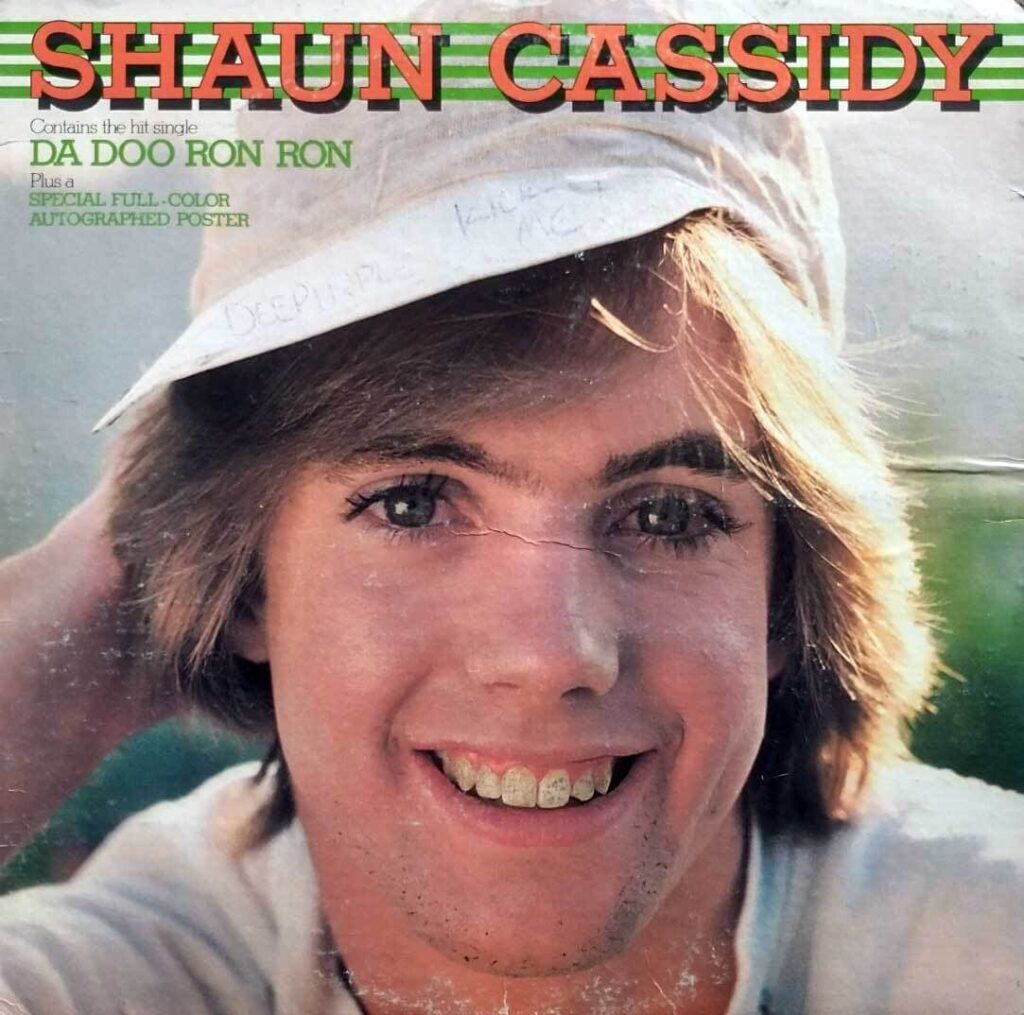
When Teen Idol Fever Hit the Top: A Golden Age Anthem Reborn
For those of us who came of age during the decade of disco balls and bell bottoms, the summer of 1977 wasn’t just about Star Wars and eight-track tapes; it was about the sudden, blinding flash of a new teen idol, Shaun Cassidy, and the irresistible, retro blast of sound that became his signature song, “Da Doo Ron Ron (When He Walked Me Home).” It was a moment of pure, unabashed pop pleasure that transcended the decades, taking a classic rock and roll tune and injecting it with the kind of fresh-faced, shaggy-haired energy that only a true heartthrob could deliver.
This song wasn’t just a hit; it was a phenomenon, the centerpiece of Cassidy’s American debut. “Da Doo Ron Ron” exploded onto the airwaves and immediately captivated a new generation. It became a colossal success, storming to No. 1 on the prestigious Billboard Hot 100 chart in 1977, where it remained for one glorious week. Its chart run was substantial, spending a total of 22 weeks on the Hot 100, and ultimately becoming a certified Gold single, cementing the young Shaun Cassidy as a major musical force almost overnight. The single’s success was directly tied to the launch of his self-titled debut album, Shaun Cassidy, which quickly achieved Platinum status in the US, proving that his appeal was far more than a fleeting crush.
Of course, the story behind the song is longer than Shaun’s own career as a teen idol. “Da Doo Ron Ron” was an original product of the legendary Phil Spector in 1963, written alongside the phenomenal songwriting duo of Jeff Barry and Ellie Greenwich. It was first made famous by the girl group The Crystals, whose version peaked at No. 3 on the Hot 100. The original song captured the ecstatic feeling of a young girl falling for a boy, underscored by Spector’s iconic “Wall of Sound”—a dense, reverberating orchestra of pop perfection.
When Shaun Cassidy, already a star from the popular TV series The Hardy Boys/Nancy Drew Mysteries, recorded his version, the meaning remained the same—a simple, innocent tale of infatuation—but the perspective was reversed and the energy was updated. The lyrics were slightly altered to reflect a boy singing about a girl named ‘Jill’ instead of ‘Bill.’ What really sold it, though, was Shaun’s delivery. He sounded breathless, joyful, and completely sincere, perfectly embodying the high-school fantasy of the ideal, slightly mischievous boyfriend. The production, while cleaner than Spector’s famous “Wall,” retained the vibrant, catchy melody and the instantly recognizable nonsense syllables—”Da Doo Ron Ron Ron, Da Doo Ron Ron Ron”—which are, in a way, the purest expression of the song’s meaning: the feeling is so overwhelming that words fail you, and all that remains is a catchy, nonsensical musical stutter of delight.
For those of us who remember buying the 45 RPM single or tearing out the glossy pages of Tiger Beat magazine, “Da Doo Ron Ron” is less a song and more a sensory time machine. It evokes memories of school dances, first slow dances, and the delicious, safe excitement of adolescent crushes. It’s the soundtrack to a time when life felt simpler, and the most dramatic event was meeting a mysterious stranger on a Monday. Shaun Cassidy may have moved on to a brilliant career as a writer and producer, but this cover remains a golden, shimmering monument to the power of a perfect pop hook and the enduring magic of the teen idol era.